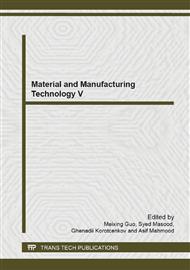p.169
p.174
p.179
p.183
p.188
p.195
p.199
p.205
p.210
Ultimate Elastic Wall Stress (UEWS) Test under Biaxial Loading for Glass-Fibre Reinforced Epoxy (GRE) Pipes
Abstract:
This paper presents the results of an experimental investigation into the Ultimate Elastic Wall Stress (UEWS) of ±55° filament wound composite pipes. The UEWS test appears to provide an attractive alternative to the current method, and has proved to be one of the most effective in term of accuracy and speed. Moreover, it has been found to be sensitive to changes in key manufacturing and raw material parameters. The pipes were subjected to biaxial loading, which was achieved by combinations of hoop and axial stress. Loads were applied as groups of cycles which, were gradually increased until the UEWS had been determined. Various ratios of hoop to axial stress were applied to the pipes, ranging from pure axial to pure hoop loading at room temperature and at 65°C. These ratios were investigated by applying different pressures in both the main and small chambers built inside the pipe, and therefore it was unnecessary to add any external loads to the pipe wall. Tests were also conducted to observe leakage through the pipe wall. The main failure mode observed was weepage through the pipe wall, which was due to intensive matrix microcracking. The results from the UEWS tests are presented in the form of failure envelopes showing the effects of testing at an elevated temperature. Finally, degradation in the elastic properties of the pipe wall is also discussed and plotted against wall stress.
Info:
Periodical:
Pages:
188-194
Citation:
Online since:
June 2014
Authors:
Price:
Сopyright:
© 2014 Trans Tech Publications Ltd. All Rights Reserved
Share:
Citation:


